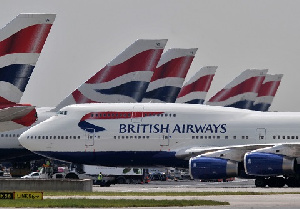Petrol, diesel prices to remain stable—IES

Mr Fritz Moses, Research Analyst, IES, attributed the projected stability in prices to the drop in prices of petroleum products on the international market in the last pricing window.
He gave the projection in an interview with the Ghana News Agency,
In its review of the April 2022 First Pricing Window (April 1 to April 16, 2022), the IES found that Brent Crude price stayed mostly below the $110 per barrel mark, closing the window below $100 per barrel.
“For the window under assessment, prices reached an average of $104.98 per barrel, representing a 3.03 per cent reduction over the previous window’s average price of $108.27 per barrel,” it said.
“Gasoline price fell marginally by 1.06 per cent, from its initial price of $1060.23 per metric tonne to the end date price of $1049.02 per metric tonne,” it added.
The Institute, however, indicated that the Cedi, which is a major variable in determining fuel prices locally, depreciated by 1.44 per cent to close at Gh¢7.79 to the Dollar from the earlier window’s rate of Gh¢7.68 to the Dollar.
“For the remainder of April 2022, with the 1.5 per cent cedi depreciation against the Dollar, 1.06 per cent fall in petrol price, 3.65 per cent fall in diesel price, and 3.72 per cent fall in the price of LPG per metric tonne, the IES projects relative stability in the price of fuel on the local market,” it said.
Currently, petrol and diesel are trading at an average Gh¢9.39 and Gh¢10.33 per litre respectively.
This is a reduction of 4.37 per cent on the previous average price of Gh¢9.80 per litre for petrol and a 3.46 per cent reduction from the previous diesel average price of Gh¢10.70 per litre.
As part of measures to reduce the impact of the Cedi’s depreciation on the petroleum market, the Bank of Ghana earlier this month introduced a foreign exchange forward auction for Bulk Oil Distributing Companies (BDCs).
The move, which is exclusive for BDCs licenced by the National Petroleum Authority (NPA), is intended to reduce the uncertainty of the future availability of forex to aid price stability in the ensuing pricing window within the downstream sector.
The Government, beginning this month, reduced the margins on fuel by 15 pesewas per litre for the next three months.
The BOST margin has been reduced by two pesewas per litre, and the Unified Petroleum Pricing Fund Margin has also been reduced by nine pesewas per litre.
The Government further reduced the Fuel Marking Margin by one pesewa per litre, with the Primary Distribution Margin also reduced by three pesewas per litre.





